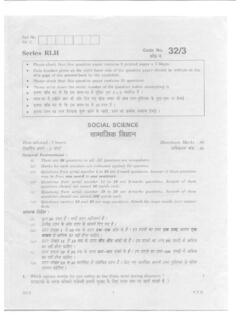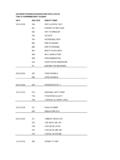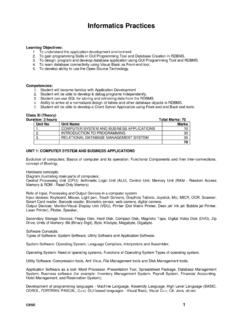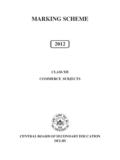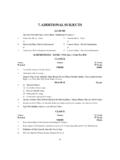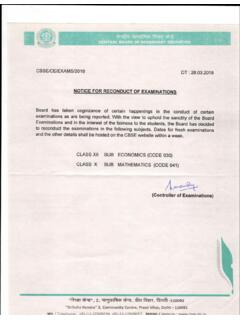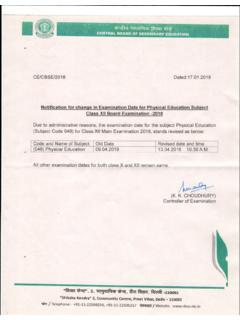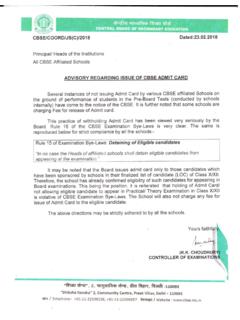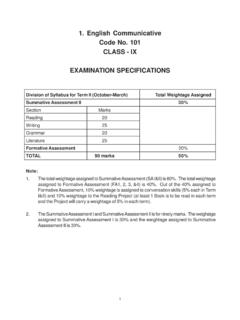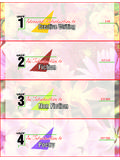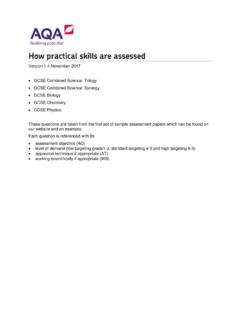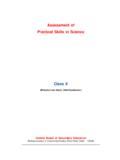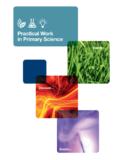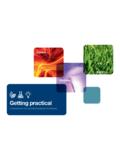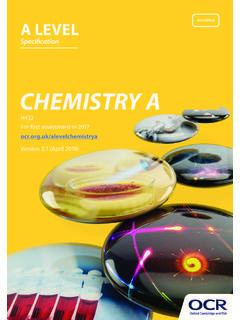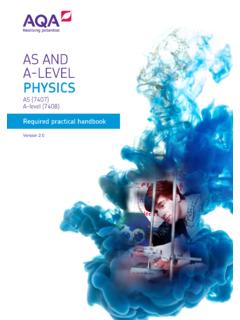Transcription of Assessment of Practical Skills in Science and …
1 1 Assessment of Practical Skills inScience and TechnologyClass XCentral Board of Secondary EducationShiksha Kendra, 2, Community Centre, Preet Vihar, Delhi 11009223 ContentsForewordIntroductionBoard s InitiativeList of ExperimentsCategories of Practical SkillsDesign of Question PaperSample Question Paper IQuestion-wise Analysis and Scoring Key - ISample Question Paper IIQuestion-wise Analysis and Scoring Key - IISample Question Paper IIIQ uestion-wise Analysis and Scoring Key IIIA cknowledgementsPage crucial role of experiments in school Science curriculum is universally good Science curriculum must not only give balanced emphasis to both theoryand experiments but also integrate these two essential and complementary aspectsof
2 Science in the teaching-learning process. Modern Science , as we all know, is theresult of a creative interplay of experiments, observations and theoretical are several ways in which experiments facilitate and improve the learning ofscience. First and foremost, experiments help students develop the right perspectiveof Science , namely that Science is not just a theoretical abstraction it is an attemptto describe the working of the real world around us. A hypothesis or idea in scienceis acceptable only if observations and experiments confirm it. Second, experimentsare among the most effective ways to generate interest in Science .
3 For many students,an apparently dry , uninteresting fact of a theory textbook can become live andexciting when translated into an experiment. Third, experiments promote the basicskills and competencies of doing Science : procedural and manipulative Skills ,observation Skills , Skills of representing and interpreting data and the accompanyingconceptual and critical abilities. For these various reasons, promoting activity andexperiment based learning has been at the heart of many efforts aimed at improvingscience education in our several laudable efforts in the past, experiments, by and large, have continuedto be marginalized in our schools.
4 There seem to be two principal , experiments require a certain minimum infrastructure a laboratory withsome basic equipments and consumables on a recurring basis. Secondly, assessmentof Practical Skills in Science in a sound and objective manner is by no means aneasy task. The difficulty multiplies manifold if Assessment is to be carried out on alarge scale. Thus lack of infrastructure and, more important, lack of reliableassessment have resulted in the unfortunate neglect of experimental work in mostof the schools in Board s InitiativeThe problem of neglect of experiments in our schools and of proper Assessment ofstudents in Practical Skills has always been a matter of great concern for the CentralBoard of Secondary Education.
5 The problem assumes even greater importance forClass X, which is the terminal stage of secondary education. The Board has beenkeen to find out ways to promote laboratory work in our school system and hastaken a number of initiatives in this direction. The Board tries to ensure that itsaffiliated schools have the necessary infrastructure to carry out experimentsprescribed in the syllabus to Class IX and X. To make this feasible for all itsschools, care is taken that the laboratory curriculum does not demand prohibitivelycostly equipment or other unrealistic requirements.
6 As another important initiativeto make Assessment of practicals fair, uniform and reliable and to increase the6emphasis on practicals in schools, the Board introduced a new scheme of assessmentfor Class IX from the academic year 2005-06. A document giving detailed guidelineson the new scheme of Assessment of practicals with sample question papers wasbrought out by the Board. This was done to ensure that practicing teachersunderstood the new scheme clearly and were sensitized and oriented to the samebefore it was introduced for the more critical Class X stage. The positive experienceand feedback to the new scheme for Class IX have convinced the Board that this isa step in the right direction.
7 Accordingly, the present document reiterates the detailedguidelines of the Class IX document and gives sample question papers and relatedmatters concerning the syllabus of practicals for Class X. In view of the criticalimportance of Class X stage, an even greater care has been taken that the newscheme is fair and realistic, does not cause hardship to any student or school, andpromotes uniform and reliable Assessment of Practical per the new scheme, theory and Practical examination will have a weightage of60% and 40% respectively. The Practical examination will comprise of twocomponents.
8 One component of this Practical examination will be in the form of amultiple choice type theory paper test, to be conducted by the Board in Class X asan independent paper. This question paper will be of 20 marks and 1 hour will aim at testing of Practical Skills through multiple-choice type multiple-choice question will have four options, with only one of them as thecorrect option. The second component will also have a weightage of 20 marks butwill be conducted at school level on the lines being followed Board hopes that this initiative will be an important step not only to giveexperiments their due place in the subject of Science and Technology but also topromote, in general, an experimental culture in our school OF EXPERIMENTS (Class X)1.
9 To find the pH of the following samples by using pH paper/universal ) Dilute Hydrochloric acidii) Dilute NaOH solutioniii) Dilute Ethanoic acid solutioniv) Lemon juicev) Watervi) Dilute Sodium Bicarbonate To study the properties of acids and bases (dilute HC1 & dilute NaOH) by theirreaction withi) Litmus solution (Blue/Red)ii) Zinc metaliii) Solid Sodium Cabonate3. To determine the focal length of aa Concave mirrorb Convex lensby obtaining the image of a distant To trace the path of a ray of light, passing through a rectangular glass slab, for differentangles of incidence. Measure the angle of incidence, angle of refraction, angle ofemergence and interpret the To study the dependence of current (I) on the potential difference (V) across a resistorand determine its resistance.
10 Also plot a graph between V and To determine the equivalent resistance of two resistors when connected in To determine the equivalent resistance of two resistors when connected in To prepare a temporary mount of a leaf peel to show To show experimentally that light is necessary for To show experimentally that carbon dioxide is given out during To study (a) binary fission in Amoeba and (b) budding in yeast with the help ofprepared To determine the percentage of water absorbed by To prepare SO2 gas, observe its following properties and draw inferences in respect ofi)odourii) solubility in wateriii) effect on litmus paperiv) action on acidified potassium dichromate a) To observe the action of Zn, Fe, Cu and Al metals on the following salt ) ZnSO4 (aq.
